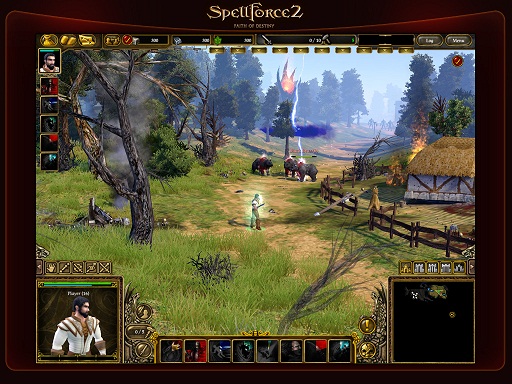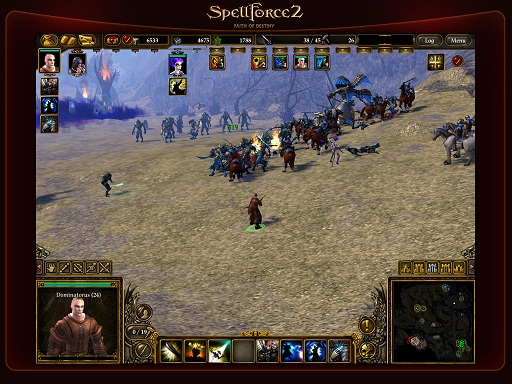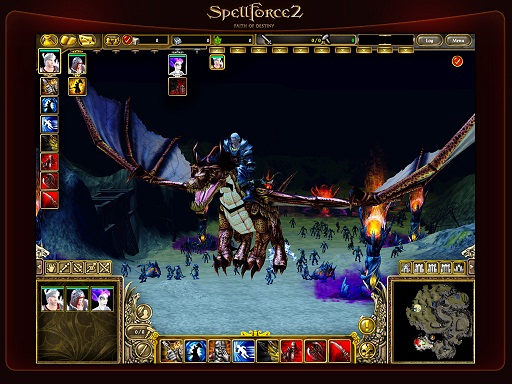Spellforce was an interesting blend of RPG avatar character development while also allowing the player to control large armies in an RTS framework. Since 2003, two expansions for the original title have been released, as well as a sequel in 2006 and one expansion for that in 2007. Spellforce 2: Faith in Destiny is the second such expansion to the sequel and continues the story from where it left off. In the gap between this release and the last, publisher JoWooD Entertainment and developer DreamCatcher Games have improved on a variety of features, including new units, buildings, spells, missions and maps. The actual graphics are based on the Spellforce 2 engine that the others are based on, but have been updated with contemporary Shaders to reflect the better hardware available.

The story of Spellforce revolves around how the player, a Shaikan (Person imbued with the blood of the dragon god Ur, granted powers of resurrection and the ability to summon followers to their aid), travels around the world of Eo to collect an army consisting of humans, dwarves and elves to defeat a great evil threatening the land. In Faith in Destiny, a new race has emerged to challenge the peace of the world and so the player must once again take control of an avatar to face the danger. In doing so, the PC will encounter new characters and old ones from previous games and lore. Some popular legendary cast members will make reappearance as well. The varied races that populate Eo form factions, with each representing common fantasy tropes, such as “the Realm” mirroring upright ‘good’ races (i.e. humans, elves, dwarves), “the Pact,” consisting of the evil races, and “the Clans,” which make up the remaining races that aren’t affiliated with an ideology (barbarians, orcs, etc).

The player retains the ability to control up to 6 characters as well as sometimes guest NPCs that level in concurrence with the avatar character. The RPG elements are similar to Diablo’s leveling system and specializations, as well as its isometric viewpoint; the influence of Baldur’s Gate is apparent when controlling the movements of multiple characters. As in any RPG, the avatar and his allies in Spellforce must gain experience through combat and through completing side-quests, accumulating arms and armor. As wealth and experience is accumulated, the player develops his forces from RPG-style individual characters at first to army sized groups with specialized units. Like other RTS titles, the different factions have unique playing styles with different building and troop focuses. The player has several gameplay choices to choose from, including a campaign mode with story, the ubiquitous RTS skirmish mode and a free play mode that allows the player to develop his RPG characters on the world stage minus the story of the campaign; options exist to play any of these modes in multiplayer.

Spellforce 2 was critically successful with an 80% score from metacritic; the reviewers commented that the problems of the original were mostly dealt with, with some saying that it was one of the best RPG/RTS hybrid games available but failed to innovate in either direction to any substantial degree. Despite this, the series has managed to cultivate and develop a large fan base and has kept up the pressure with successive releases that seek to improve the problems players have had with gameplay mechanics and also to develop the world of Eo more fully into a true and deep fantasy setting. Spellforce 2: Faith in Destiny is set for a November 30th, 2010 release on PC at a budget price of and should be able to continue the improving quality of the previous titles.